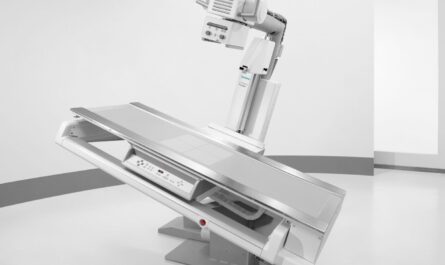
The blood flow measurement devices market comprises Doppler ultrasonography systems, laser Doppler flowmeters, and other devices that assist healthcare professionals monitor blood circulation through arteries and veins. These devices provide accurate and non-invasive measurements of blood volume and flow rate, helping physicians diagnose cardiovascular diseases. The increasing adoption of wearable blood flow sensors integrated with the Internet of Things (IoT) is estimated to significantly propel the blood flow measurement devices market.
The Global blood flow measurement devices market is estimated to be valued at US$ 639.5 million in 2024 and is expected to exhibit a CAGR of 8.8% over the forecast period 2023 to 2030.
Key Takeaways
Key players operating in the blood flow measurement devices are Arjo, Atys Medical, Compumedics Ltd., Cook Medical Inc., Deltex Medical Ltd., GF Health Products, Inc., Medistim ASA, Moor Instruments Ltd., Perimed AB, Transonic Systems, Inc., Medtronics, Biomedix Inc, AKW Medicals Inc., D E Hokanson Inc., Elcat GmBH, Flowtronics Inc., and Carolina Medical Plc.
The key opportunities in the market include increasing adoption of home healthcare monitoring devices and the growing demand for ambulatory surgical centers. IoT integration enables remote patient monitoring and predictive healthcare.
Technological advancements such as integration of Doppler ultrasound with AI algorithms improving detection accuracy and laser doppler anemometry enabling minimally invasive microvascular blood flow measurements are estimated to drive the market.
Market Drivers
The rising geriatric population suffering from cardiovascular diseases is a major market driver. As per WHO, cardiovascular diseases account for over 17 million deaths annually. The growing healthcare expenditure per capita and increasing health awareness are also fueling the adoption of advanced blood flow monitoring devices for faster diagnosis and treatment of CVDs.
Current challenges in blood flow measurement devices market:
Some of the major challenges being faced by the blood flow measurement devices market are high cost of advanced devices, shortage of skilled professionals, risks and complications associated with some devices. The advanced blood flow measurement devices that provide very accurate readings are quite expensive which limits their adoption. Also, operating and maintaining some of these complex devices requires trained technicians which are not easily available everywhere. Further, invasive devices like duplex ultrasound system carry risks like infection if not used carefully by experienced professionals. Addressing these challenges would be important for the continued growth of this market.
SWOT Analysis
Strength: Advanced non-invasive devices provide highly accurate readings without any risks. Growing prevalence of cardiovascular diseases is increasing demand.
Weakness: High costs of some devices limit access. Skilled workforce shortage challenges use of complex devices.
Opportunity: Untapped markets in developing nations offer huge growth potential. Technological advances can reduce device costs and make them affordable.
Threats: Alternative non/minimally invasive diagnostic methods pose competition. Regulations can delay new product approvals.
In terms of value, the blood flow measurement devices market is currently most concentrated in North America and Europe due to advanced healthcare systems and high acceptance of new technologies in these regions. However, Asia Pacific region is poised to be the fastest growing market in the coming years supported by expanding medical infrastructure, large patient pool and improving access and awareness in developing countries like India and China.
Another fastest growing geographical region for blood flow measurement devices market is expected to be Latin America. Countries like Brazil, Mexico are witnessing increased healthcare spending and demand for quality care. Further, favorable regulatory norms are encouraging global players to tap into opportunities through local manufacturing and market entry in Latin America, which will drive higher adoption of advanced blood flow monitoring solutions in this region.
*Note:
- Source: Coherent Market Insights, Public sources, Desk research
- We have leveraged AI tools to mine information and compile it


